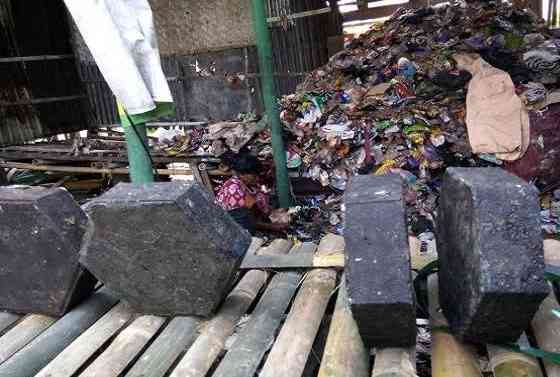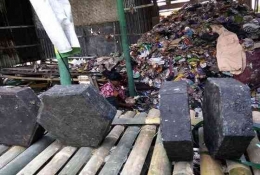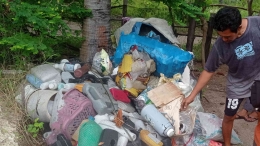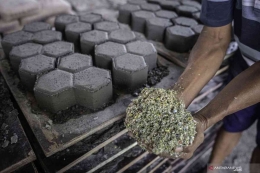In an increasingly environmentally-conscious era, recycling practices are key in the effort to manage waste and reduce negative impacts on the environment. One innovation that stands out in this context is the use of scrap as raw material for paving blocks. The increasing volume of waste, particularly plastics, glass and metals, has become a serious problem in many global communities. In an effort to address this issue, stakeholders have begun to look at creative ways to recycle such waste into useful products. One interesting application is the use of these wastes in the manufacture of paving blocks. Paving blocks, or paving stones, are an essential component in urban and rural infrastructure development. Its extensive use in the creation of roads, sidewalks, and parking areas has made it a major element of city life. By utilizing scrap items such as recycled plastics, old tires, or other unused materials, paving block manufacturing is an innovative solution that helps reduce waste piles while producing a useful product.
The advantages of making paving blocks from scrap are manifold. First of all, this practice helps reduce the amount of waste that goes into landfills, reducing the burden on the environment. In addition, the use of scrap materials also reduces dependence on new raw materials, helping to conserve increasingly limited natural resources. In addition to the environmental benefits, making paving blocks from scrap also has a positive social impact. The process often involves training and engaging communities in waste management, creating employment opportunities, raising environmental awareness, and building communities that care about environmental issues. The use of scrap paving blocks is also part of a global movement to create a cleaner and more sustainable environment. Many local, national and international initiatives encourage the use of recycled materials in infrastructure development to reduce carbon footprint and environmental impact. Overall, making paving blocks from scrap is a step in a more environmentally friendly and sustainable direction. It's not just about creating a useful product from waste, but also about changing our consumption paradigm to be more environmentally responsible.
Facing Challenges in Mass Production: Sustainable Paving Blocks from Scrap
Making paving blocks from waste involves innovations in material composition. It uses a mixture of recycled plastic, rubber powder from old tires, or other waste materials mixed with binding agents such as cement or other additives. This process creates paving blocks that are not only strong and durable, but also provide a creative solution in utilizing hard-to-degrade waste.
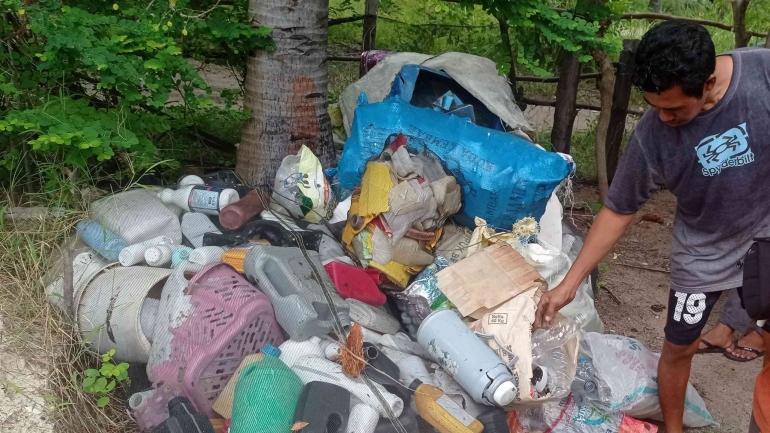
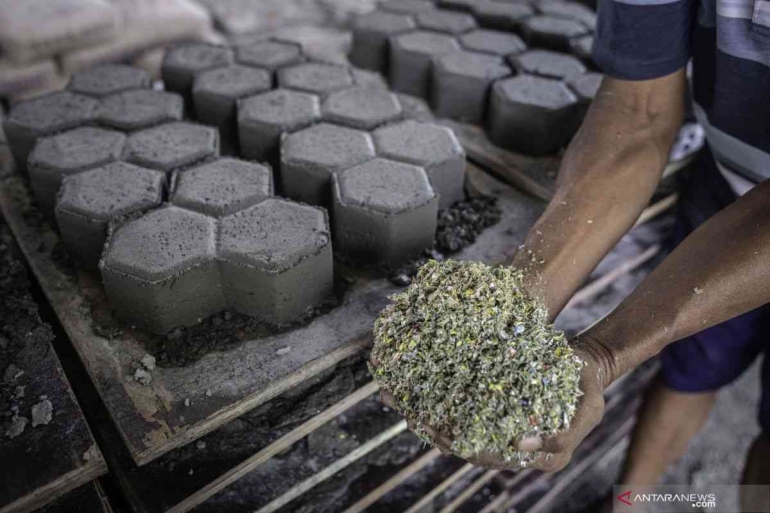
Apart from being a technical solution, making paving blocks from waste also has an impact in raising environmental awareness. Through education and information programs to the community, awareness of the importance of recycling and waste management increases. This contributes to a more environmentally-friendly behavior change in the community. Despite its many benefits, there are still challenges that need to be overcome regarding the manufacturing of paving blocks from waste, such as material standardization, large scale production, and more advanced waste treatment technologies. Continuous innovation is needed to overcome these obstacles, creating more efficient and sustainable solutions in the future.
This follow-up discussion underscores that while the use of waste for paving blocks offers many advantages, there are still many technical, social, and environmental aspects that need to be considered and improved for this practice to be more widely and effectively implemented.
Facing Technical Challenges: Preparatory Steps in the Production of Eco-friendly Paving Blocks
Before the process of making paving blocks from scrap begins, there are a series of preparations and steps that need to be considered. The following are the steps that are generally taken before starting the production of paving blocks from scrap waste:
1. Research and Planning
Feasibility Study: Conduct research to evaluate the technical, economic, and environmental success of making paving blocks from scrap. This includes analyzing available raw materials, production processes, costs, and environmental benefits. Production Process Planning: Determine the production process to be used, including the source of waste to be sourced, processing techniques, and the creation of an optimal formula or mix of materials.
2. Waste Collection and Segregation
Waste Source Identification: Determine the source of waste to be used in the production of paving blocks. This could be recycled plastic waste, old tires, or other waste. Waste Collection and Segregation: Design a waste collection and sorting system to ensure the quality of the raw materials used. Ensure that the waste is separated and cleaned before processing.
3. Material Preparation
Waste Treatment: Waste treatment processes such as crushing or grinding waste into a suitable size for mixing with binders.
Preparation of Additional Materials: Prepare additional materials such as cement, additives, or other binders needed to create a strong and durable mixture.
4. Testing and R&D
Quality Testing: Conduct tests on the waste mixture and additives to ensure that the mixture meets the required quality standards.
Research and Development (R&D): If necessary, conduct further research and development to find the optimal blend formula and efficient production process.
5. Fulfillment of Environmental Requirements
Permits and Regulations: Make sure to obtain the necessary permits and comply with environmental regulations related to waste management and construction material production. These steps are important to ensure that the production process of paving blocks from scrap waste is efficient, produces high-quality products, and is mindful of any environmental impacts that may arise.
Production Process of Eco-friendly Paving Blocks from Scrap Waste: Quality and Environmental Conservation Measures
After all the conditions are met, the next step is the process of making paving blocks from scrap waste, which involves certain conditions or steps to ensure a quality and environmentally friendly end result. Here are some general provisions to consider:
1.Waste Collection and Segregation
Waste Collection: Start by collecting waste such as recycled plastic, old tires, or other waste materials that will be used as raw materials for paving blocks. Sorting and Cleaning: Waste segregation and cleaning process is very important. Ensure that the waste collected has been separated by type and cleaned of contamination that could affect the quality of the paving blocks.
2. Processing Waste into Raw Materials
Crushing and Mixing: The next step is to crush the waste into smaller sizes and mix it with binders such as cement or other additives. This process creates a homogeneous mixture for paving block manufacturing.
3. Molding and Forming
Molding: The mixture of waste and binder is then molded into paving block shapes using special molds. Pressure and compaction at the time of molding is required to form strong and dense paving blocks.
4. Drying and Hardening
Drying: After molding, paving blocks require a drying process to dry thoroughly. This drying process can take place indoors or in the sun depending on the method used. Hardening: After drying, paving blocks require time for hardening or curing which allows the binders to bond properly making the paving blocks strong and durable.
5. Quality Testing
Testing: It is important to test the paving blocks produced to ensure their quality. Tests include strength, resistance to pressure, and ability to withstand loads in accordance with set standards.
6. Implementation of a Clean Environment
Environmental Monitoring: In the manufacturing process, make sure to comply with environmental regulations and emphasize environmentally friendly practices, such as waste management and efficient use of resources.
These provisions are important to ensure that paving blocks from scrap waste can meet the required quality standards while keeping the environment in check. This ensures that the resulting product is safe for use in infrastructure construction.
Follow Instagram @kompasianacom juga Tiktok @kompasiana biar nggak ketinggalan event seru komunitas dan tips dapat cuan dari Kompasiana. Baca juga cerita inspiratif langsung dari smartphone kamu dengan bergabung di WhatsApp Channel Kompasiana di SINI





